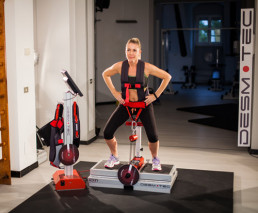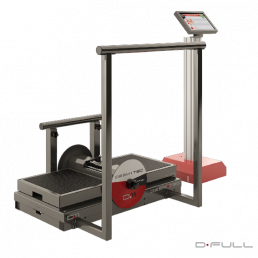isoinerzial training

In isoinertial training, an athlete’s concentric movement is transformed into kinetic energy. That energy is latterly rebounded and dissipated into the eccentric phase of the movement.
The dissipated energy is directly proportional to the energy generated from the concentric movement. This results in broader motor unit recruitment promoting faster recovery and enhancing muscle conditioning.
Long-duration space travel in the late ’80s brought up new concerns of preserving muscular efficiency and curbing hypotrophy.
Zero gravity conditions caused lower stress levels on acting bone segments, which led to skeletal pathologies such as Spaceflight Osteoporosis, Osteopenia (Bone Loss) and increased values of serum calcium.
Studies lead to ground-breaking solutions that became accessible to the physical conditioning field creating new approaches to injury rehabilitation and prevention.
The system is simple, it is made up of a rotating shaft and a belt. The belt is attached to the athlete’s waist, cords run from the belt to the shaft. The cords are wrapped around the shaft and are used transfer the athlete’s movement into kinetic energy which rotates the shaft. In order to store the kinetic energy, the shaft is equipped with a flywheel.
The greater the force applied from the athlete during the concentric movement, the faster the flywheel will accelerate.
The power exerted in the eccentric movement, due to the recoil of the flywheel, is directly proportional to the athlete’s power in the concentric part of the movement.
This allows the athlete to train at a greater capacity during both movements. This is the great edge the isoinertial training has in comparison to traditional isotonic training.
In isotonic training, the selected load remains constant throughout the entire range of motion. Isoinertial contractions are more representative of the types of contractions an athlete will experience during a sporting activity. A broad spectra of variables such as sudden changes in slope inclination, unpredictable body decelerations, and variations in muscle lines of action determine a complex range of neuromuscular responses.
Adaptations are required in order to maximize the performance and motor coordination of the athlete.
